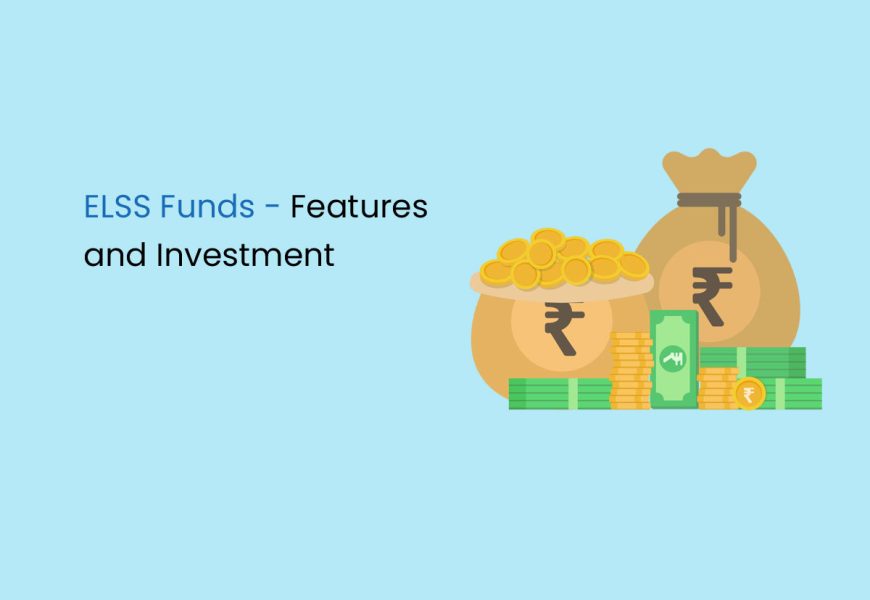Understanding the tax implications of your investment decisions is a critical aspect of financial planning. Overlooking the tax ramifications can significantly affect your overall financial well-being. This underscores the importance of investors considering avenues that not only help in wealth creation but also offer tax-saving benefits. One such option gaining popularity is Equity-Linked Savings Schemes (ELSS). Unlike traditional tax-saving schemes such as the Public Provident Fund (PPF) or National Savings Certificates (NSCs), ELSS stands out by investing in the dynamic world of stocks.
In this article, we will delve into the features and advantages of ELSS, exploring how it can be a strategic choice for both wealth accumulation and optimising tax liabilities.
What is ELSS?
ELSS funds, categorised as equity funds, predominantly allocate a significant portion of their funds to equity or equity-related instruments. Termed as tax-saving schemes, ELSS funds offer a notable benefit of tax exemption, allowing individuals to deduct up to Rs. 150,000 from their annual taxable income under Section 80C of the Income Tax Act.
As implied by their name, ELSS funds are equity-oriented and come with a mandatory lock-in period of three years. Recently, an increasing number of taxpayers have turned to ELSS schemes to capitalise on these tax benefits. Investors in ELSS can enjoy tax exemption on the invested amount, with the maximum limit set at Rs. 150,000. Additionally, any returns earned under this scheme after the completion of the three-year lock-in period are treated as Long Term Capital Gains (LTCG) and are subject to a 10% tax rate if the income exceeds Rs. 1 lakh.
Features of ELSS
ELSS mutual funds, designed to provide investors with tax-saving benefits along with potential wealth creation, encompass the following key features:
- Tax Deductions: ELSS funds offer tax deductions of up to Rs 1,50,000 annually under Section 80C of the Income Tax Act.
- Lock-In Period: These funds have a mandatory lock-in period of three years. Premature exits or withdrawals are not permitted during this period.
- Investment Flexibility: Investors have the flexibility to invest any amount in ELSS, with no upper limit. However, the minimum investable amount may vary across different fund houses.
- Inflation-Beating Returns: ELSS funds stand out as tax-saving investments with the potential to provide returns that can beat inflation, contributing to long-term wealth growth.
- Dual Benefits: Investing in ELSS funds offers the dual advantages of tax deductions, enhancing your annual tax planning, and the potential for wealth creation over the investment horizon.
- Equity-Centric Portfolio: ELSS funds predominantly allocate their portfolios to equities, making them equity-centric. While equities form a substantial part, they may also have some exposure to fixed-income securities, providing a diversified investment approach.
How Does ELSS Work?
ELSS funds operate as equity funds characterised by a diversified portfolio. The underlying mechanism involves strategic investment in stocks of publicly traded companies, spanning various market capitalisations such as large, mid, and small companies, as well as diverse industries. The primary objective of ELSS funds is to optimise long-term wealth appreciation for investors. Fund managers meticulously select stocks based on thorough market research, aiming to achieve the best risk-adjusted portfolio returns.
One of the key features that make ELSS funds attractive is their eligibility for tax deductions under Section 80C of the Income Tax Act of 1961. Investors can benefit from tax deductions on the amount invested, with the IT Act allowing a deduction of up to Rs. 1.5 lakh. While there is no upper limit on the investment amount, channelling funds into ELSS can lead to substantial tax savings, potentially reaching up to Rs. 46,800 per year. This tax-saving aspect, coupled with the potential for wealth creation through equity investments, makes ELSS funds a popular choice among investors for effective tax planning and long-term financial growth.
What Should You Consider Before Investing in ELSS?
Before deciding to invest in an ELSS mutual fund, it’s crucial to consider the following factors carefully:
- Investment Horizon: ELSS funds are best suited for investors with a longer investment horizon, typically exceeding five years. The equity exposure of ELSS funds requires a longer time frame to help mitigate the impact of market volatility and potentially yield better returns.
- Returns: ELSS funds don’t offer guaranteed returns, as their performance is directly tied to the market dynamics and the underlying securities in their portfolio. Investors should be aware that the returns generated are subject to market fluctuations. However, over a longer investment horizon of more than 5 years, ELSS funds may provide higher returns compared to other tax-saving investment options.
- Lock-in Period: ELSS mutual funds have a mandatory lock-in period of three years. During this period, investors cannot redeem or withdraw their holdings. It’s essential to be aware of this lock-in period and evaluate whether you are comfortable with having your funds locked in for this duration.
Carefully assess these factors and align them with your financial goals and risk tolerance, so you can make informed decisions about investing in ELSS funds. It’s advisable to consult with a financial advisor to tailor your investment strategy based on your individual circumstances.
Taxation and ELSS
The taxation rules governing ELSS funds are designed to encourage long-term investments while providing tax benefits. Here’s an overview of the taxation rules for ELSS funds:
Lock-in Period and Capital Gains
ELSS funds come with a mandatory lock-in period of three years. During this period, investors cannot redeem or sell their units, preventing short-term profit gains. Upon redeeming the units after the completion of the lock-in period, investors realise long-term capital gains (LTCG). These gains are tax-free, up to Rs. 1 lakh per financial year.
Tax on Exceeding Rs. 1 Lakh
Any LTCG beyond the exempted limit of Rs. 1 lakh is subject to a 10% long-term capital gains tax. This means that only the gains exceeding Rs. 1 lakh will be taxed at a flat rate of 10%.
Section 80C Deductions
Investments made in ELSS funds qualify for tax deduction benefits under Section 80C of the Income Tax Act. The maximum deduction allowed under this section is Rs. 1.5 lakh. It’s important to note that the Section 80C deduction is cumulative across various eligible instruments, including ELSS, NSC, PPF, etc. The total deduction cannot exceed Rs. 1.5 lakh.
The combination of tax deductions and the potential for tax-free capital gains makes ELSS a tax-efficient investment option with the added benefit of wealth creation over the long term.
SIP vs. Lumpsum
Choosing between SIP (Systematic Investment Plan) and Lumpsum investments depends on your risk tolerance, market conditions, and investment horizon. Here’s a breakdown of the considerations for each mode:
SIP (Systematic Investment Plan)
- Lower Risk: SIP is advisable if you prefer lower risk. Investing regularly through SIP allows you to navigate market cycles by purchasing more units when markets are down and fewer units when markets are up.
- Market Timing: SIP eliminates the need to time the market. Investing consistently over time averages the purchase cost of fund units, reducing the impact of market volatility.
- Averaging Benefits: SIP provides the benefit of rupee cost averaging by spreading investments across market cycles. This helps in achieving a lower average purchase price over the long term.
Lumpsum Investment
- Higher Risk: Lumpsum investments are suitable when you are willing to take higher risk levels. It’s more suitable during bearish market trends, allowing you to buy at lower valuations.
- Longer Investment Horizon: Investing a lump sum is recommended if you have a longer investment horizon, typically more than 5-7 years. This duration gives your investment time to recover from market fluctuations and realize significant gains.
- Market Analysis: Lumpsum investments require a thorough analysis of market conditions. It’s essential to assess whether the market is in a bearish trend and valuations are attractive.
To sum up, SIP is a more conservative and systematic approach, suitable for investors with a lower risk appetite. On the other hand, a lump sum investment involves higher risk and requires a good understanding of market trends. The choice between SIP and Lumpsum should align with your financial goals, risk tolerance, and investment strategy.
Comparing ELSS With Other Tax-Saving Instruments
While there are various tax-saving schemes like FD, PPF, and NSC that aid in wealth accumulation, their returns are often limited. Enter ELSS, standing out with generally higher returns, particularly during bullish market trends. The appealing combination of superior returns and a mere three-year lock-in period positions ELSS mutual funds as the top choice among tax-saving investments. Notably, even the post-tax returns of ELSS surpass those of other tax-saving options.
| Investment | Returns | Lock-in Period | Tax on Returns |
|---|---|---|---|
| 5-Year Bank Fixed Deposit | 4% to 6% | 5 years | Taxable |
| Public Provident Fund (PPF) | 7% to 8% | 15 years | Non-taxable |
| National Savings Certificate | 7% to 8% | 5 years | Taxable |
| National Pension System (NPS) | 8% to 10% | Till Retirement | Partially Taxable |
| ELSS Funds | 15% to 18% | 3 years | Partially Taxable |
Section 80C of the Indian Tax Act allows a deduction of up to Rs. 150,000 from your total annual income. However, many taxpayers often find a significant portion of this deduction already allocated to mandatory contributions.
FAQs about ELSS
How to invest in ELSS?
Initiating an investment in ELSS involves completing KYC verification, which requires essential documents such as a photo, PAN, and valid proof of address. Once KYC is verified, investors can select their preferred ELSS fund, click 'invest now,' and follow the provided steps for a seamless investment process.
How ELSS works?
ELSS funds maintain a minimum 65% exposure to equities, aiming for long-term wealth appreciation through an optimised, risk-adjusted portfolio. Investments in ELSS qualify for tax deductions under Section 80C of the Income Tax Act, allowing a rebate of up to Rs 1,50,000 annually and potential tax savings of Rs 46,800. ELSS funds have a mandatory lock-in period of three years, the shortest among Section 80C investments.
How to start investing in ELSS?
Before investing, complete KYC verification and provide the necessary documents. After KYC, choose the 'tax-saving' category, select the desired fund, click 'invest now,' and complete the displayed steps.
How to buy ELSS online?
Technological advancements allow for a seamless online purchase of ELSS units. Post-KYC, filter funds by selecting 'tax-saving,' choose a fund, click 'invest now,' and follow the provided steps to complete the transaction.
Which section does ELSS come under?
ELSS mutual funds provide tax deductions under Section 80C of the Income Tax Act, 1961, distinguishing them as the sole mutual fund category eligible for such tax rebates.
How to invest in ELSS through SIP?
For SIP investments, investors need an investment account with the fund house, completed KYC verification, and can initiate transactions based on their preferences. SIPs allow investors to stagger investments over time, minimising the impact of market volatility and providing a disciplined approach to wealth creation.
How to open an ELSS account?
To invest in ELSS, open an investment account with the chosen fund house, complete KYC verification, and then select the tax-saving or ELSS mutual fund to purchase units.
Which ELSS is best?
Assess ELSS fund performance based on parameters like past returns, expense ratio, and financial ratios such as Alpha, Beta, and Sharpe ratio over the last five years. A top-performing ELSS fund should exhibit stable performance with consistent returns even during market turbulence.
How much to invest in ELSS?
While there is no specific cap on ELSS investments, tax benefits are capped at Rs 1,50,000 annually under Section 80C. Investors may consider fully utilising this limit before exploring additional investments.





















